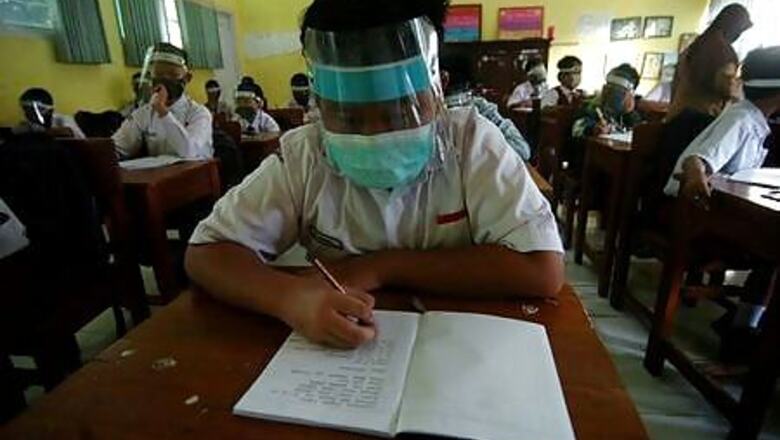
views
JAKARTA Indonesia’s move to reopen schools in some areas risks creating new clusters of coronavirus cases, with at least 180 students and teachers infected since a new academic year started in July, a teachers’ federation said on Thursday.
The world’s fourth-most populous country has allowed schools to reopen with limited capacity in “yellow” and “green” zones, with fewer reported cases and covering 43% of the student population, according to government data.
Parents can opt not to send their children to schools in these areas and extracurricular activities are not allowed.
Heru Purnomo, the secretary general of The Federation of Indonesian Teachers Associations (FSGI), said distance learning was still preferable.
“We’ve always sounded out our worries that schools could become new clusters,” Purnomo said. “Distance learning, be it offline or online, is safer than face-to-face lessons.”
Wiku Adisasmito, a spokesman at Indonesia’s COVID-19 task force, told reporters on Thursday that new clusters would not break out at schools if all health protocols were adhered to.
Explaining the policy of limited reopening, education minister Nadiem Makarim told a streamed talkshow on Wednesday that almost 90 percent of children live in areas where “most of the students find it extremely difficult to do any type of technology-based distance learning.”
In its situation report on Thursday, the World Health Organization in Indonesia warned a return to schools “risks worsening local transmission, putting a heavier burden on the nation’s limited healthcare facilities and workers and, in the long term, slowing down the economic recovery.”
Some provinces have reported a significant number of cases among the young. In Papua, nearly 300 people aged under 19 had confirmed infections as of Wednesday.
A co-founder of Lapor COVID-19, a volunteer group collating information, told Reuters it had found six clusters originating in schools that had reopened in West Kalimantan on the island of Borneo.
Indonesia has reported 132,816 coronavirus infections and 5,968 deaths, the highest death toll in Southeast Asia. Around 9% of infections are among the 0-18 age group.
Disclaimer: This post has been auto-published from an agency feed without any modifications to the text and has not been reviewed by an editor


















Comments
0 comment